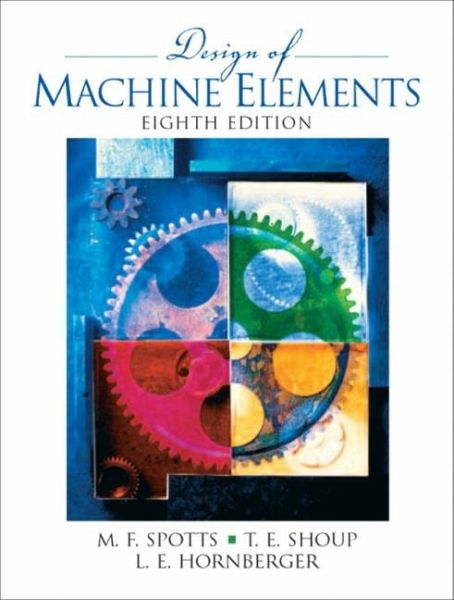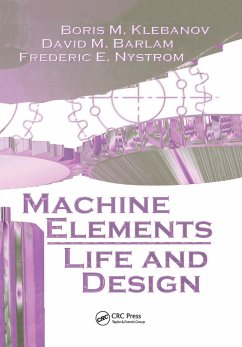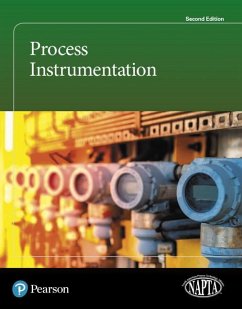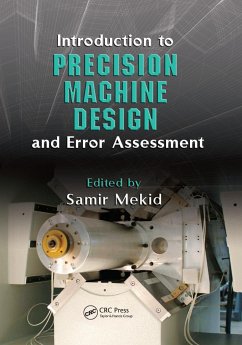
Design of Machine Elements
Versandkostenfrei!
Versandfertig in über 4 Wochen
285,99 €
inkl. MwSt.

PAYBACK Punkte
143 °P sammeln!
For a one or two-term introductory Machine Design course in Mechanical Engineering Departments, or Mechanical Engineering Technology.
Considered a classic in its field, this new edition of Design of Machine Elements represents the over 80 years of combined classroom and industry experience of its three authors. The text presents a comprehensive survey of machine elements and analytical design methods and gives students the tools and techniques necessary to facilitate design calculations for the most frequently encountered mechanical elements.
Features + Benefits
NEW - Reformatted problems that use a structured approach.
Makes the logic of example problems much easier to follow, and encourages students to adopt this structured approach in their work.
NEW - Upgraded and improved spreadsheet modules-Includes new "drop down menus," and command buttons.
Gives students easy access to additional information.
NEW - New spreadsheet modules.
Gives students access to a greater range of problems.
NEW - New chapter on design with plastic materials-Written by Dr. Hornberger, a world-class leader in plastics design and recycling.
Provides students with an excellent overview of how plastic materials are having a strong positive influence on the design of machine elements.
Worked-out numerical examples.
Illustrates for students the principles that apply to the entire mechanical design field.
Use of simple, unified notation throughout-Provides most mathematical derivations.
An emphasis on cases where loads continually fluctuate and may present stress concentrations.
Review of fundamental mechanics essentials.
Keeps these key ideas fresh in students' minds.
Many examples and applications now include the use of spreadsheet calculations.
Facilitates the computational process for students.
A chapter on form synthesis.
Gives some useful tools to improve students' design capabilities.
Use of dual system units (U.S. customary and S.I.).
Allows students to be as versatile as possible in calculations. Conversion templates allow changes to be made quickly and accurately from one system to the other.
Simplified and updated design methods throughout.
Allows students to more easily understand design methods.
Backcover
Now in its eighth edition, this newly revised version of a classic text from the field of machine design contains 15 self-contained chapters covering the fundamental principles for this important branch of mechanical engineering. The material is drawn from a variety of sources and makes extensive use of structured computational examples to illustrate actual design applications.
Among the key features of this new edition are:
A new chapter on the design with plastic materials.
A chapter devoted to form synthesis of machine parts to enable the reader to critique existing machine assemblages with a view toward creating improved designs.
A CD-ROM containing 54 Microsoft Excel spreadsheet modules to assist with the implementation of complex design tasks. Most of these modules now feature drop-down menus, as well as dual-unit capability.
A review of the fundamentals of the strength of materials appropriate for the study of machine design.
(NOTE: Each chapter ends with a References and Problems section.)
Introduction.
1. Fundamental Principles.
2. Working Stresses and Failure Theories.
3. Design of Shafts.
4. Springs.
5. Screws.
6. Belts, Clutches, Brakes, and Chains.
7. Welded and Riveted Connections.
8. Lubrication.
9. Ball and Roller Bearings.
10. Spur Gears.
11. Helical, Bevel and Worm Gears.
12. Miscellaneous Machine Elements.
13. Principles of Form Synthesis.
14. Engineering Materials.
15. Designing with Plastic Materials.
Appendix-Spreadsheet Modules.
Index.
Considered a classic in its field, this new edition of Design of Machine Elements represents the over 80 years of combined classroom and industry experience of its three authors. The text presents a comprehensive survey of machine elements and analytical design methods and gives students the tools and techniques necessary to facilitate design calculations for the most frequently encountered mechanical elements.
Features + Benefits
NEW - Reformatted problems that use a structured approach.
Makes the logic of example problems much easier to follow, and encourages students to adopt this structured approach in their work.
NEW - Upgraded and improved spreadsheet modules-Includes new "drop down menus," and command buttons.
Gives students easy access to additional information.
NEW - New spreadsheet modules.
Gives students access to a greater range of problems.
NEW - New chapter on design with plastic materials-Written by Dr. Hornberger, a world-class leader in plastics design and recycling.
Provides students with an excellent overview of how plastic materials are having a strong positive influence on the design of machine elements.
Worked-out numerical examples.
Illustrates for students the principles that apply to the entire mechanical design field.
Use of simple, unified notation throughout-Provides most mathematical derivations.
An emphasis on cases where loads continually fluctuate and may present stress concentrations.
Review of fundamental mechanics essentials.
Keeps these key ideas fresh in students' minds.
Many examples and applications now include the use of spreadsheet calculations.
Facilitates the computational process for students.
A chapter on form synthesis.
Gives some useful tools to improve students' design capabilities.
Use of dual system units (U.S. customary and S.I.).
Allows students to be as versatile as possible in calculations. Conversion templates allow changes to be made quickly and accurately from one system to the other.
Simplified and updated design methods throughout.
Allows students to more easily understand design methods.
Backcover
Now in its eighth edition, this newly revised version of a classic text from the field of machine design contains 15 self-contained chapters covering the fundamental principles for this important branch of mechanical engineering. The material is drawn from a variety of sources and makes extensive use of structured computational examples to illustrate actual design applications.
Among the key features of this new edition are:
A new chapter on the design with plastic materials.
A chapter devoted to form synthesis of machine parts to enable the reader to critique existing machine assemblages with a view toward creating improved designs.
A CD-ROM containing 54 Microsoft Excel spreadsheet modules to assist with the implementation of complex design tasks. Most of these modules now feature drop-down menus, as well as dual-unit capability.
A review of the fundamentals of the strength of materials appropriate for the study of machine design.
(NOTE: Each chapter ends with a References and Problems section.)
Introduction.
1. Fundamental Principles.
2. Working Stresses and Failure Theories.
3. Design of Shafts.
4. Springs.
5. Screws.
6. Belts, Clutches, Brakes, and Chains.
7. Welded and Riveted Connections.
8. Lubrication.
9. Ball and Roller Bearings.
10. Spur Gears.
11. Helical, Bevel and Worm Gears.
12. Miscellaneous Machine Elements.
13. Principles of Form Synthesis.
14. Engineering Materials.
15. Designing with Plastic Materials.
Appendix-Spreadsheet Modules.
Index.
For a one or two-term introductory Machine Design course in Mechanical Engineering Departments, or Mechanical Engineering Technology. Considered a classic in its field, this new edition of Design of Machine Elements represents the over 80 years of combined classroom and industry experience of its three authors. The text presents a comprehensive survey of machine elements and analytical design methods and gives students the tools and techniques necessary to facilitate design calculations for the most frequently encountered mechanical elements.












